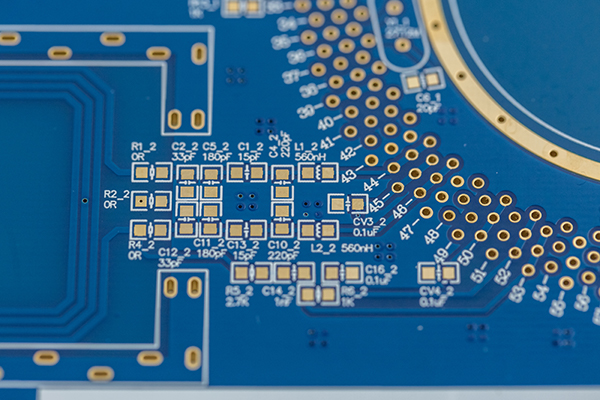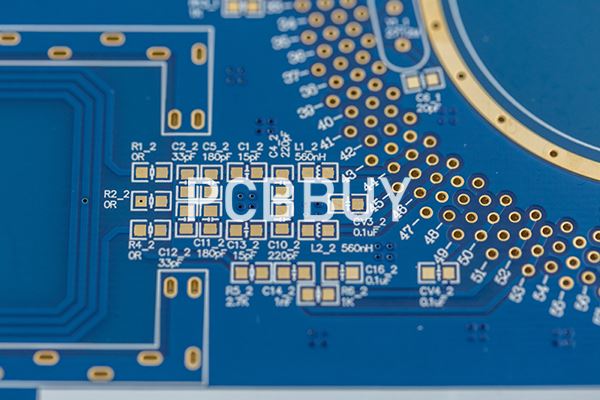What Are the Advantages of In-circuit Test of PCB?
By:PCBBUY 10/30/2023 14:37

ICT, is a test system composed of individual probes designed to make contact with the test points on your assembled printed circuit board. This will check for assembly defects as well as the functionality of the board. Each net of your board should have a test point on it for testing, which means that a test fixture could contain thousands of probes.
In this passage, we are going to tell you all basics about In-circuit test in PCB manufacturing. If you are curious about the professional knowledge of In-circuit test in PCB manufacturing, please check and read the content below for more information.
If you want to order PCB product, please check and custom your order online.

What are the advantages of In-circuit test?
In a like manner to all technologies, ICT has its downsides and upsides. Even though the advantages of ICTs offset the disadvantages, knowing the advance’s expectations is crucial.
ICT has some significant advantages that have been the reason manufacturers opt for it for centuries.
They include:
· In contrast to the AOI and flying probe testers, it can test the ball grid array assemblies (BGAs).
· Straightforward interpretation: the ICT system quickly locates the faultiness and presents it to you in a matter of minutes. You may not need professionally skilled personnel to proceed with the interpretation.
· Fast/ Time-effective: it roughly takes 1 minute in comparison to a flying probe tester that may take about 25 minutes. Being short is in regards to contacting all the board’s test points at once.
· Easy program generation: an ICT tester is effortlessly programmed. In that, you can take files from the PCB outline to make the essential program. It can test functionality as well as assembly defects as ICT systems can handle complex testing methods.
· Cost-effective: The high speed helps in quick recovering of the expense of setting up the fixture and program. It is especially true when considering boards that you assemble in large volumes.
· ICT platforms: The testing platform for ICT is available in both Windows and UNIX OS, making it universal.
· The testing can carry out several tests without applying power to the Device Under Test (DUT). It ensures a safe test and protects the board from any damage.
· Coverage: For manufacturing defects, it has high failure coverage. A more straightforward explanation for the increased range is the board’s complexity.
What Is the Basic Equipment for PCB In-circuit Test?
Even when ICs fail, one of the major reasons is static damage, and this normally manifests itself in the areas of the IC close to the connections to the outside world, and these failures can be detected relatively easily using in-circuit test techniques. Some in-circuit tester are able to test some of the functionality of some integrated circuits, and in this way give a high degree of confidence in the build and probability of operation of the board. Naturally an in-circuit test does not give a test of the functionality of a board, but if it has been designed correctly, and then assembled correctly, it should work.
In-circuit test equipment consists of a number of elements:
In circuit tester: The in circuit test system consists of a matrix of drivers and sensors that are used to set up and perform the measurements. There may be 1000 or more of these driver sensor points. These are normally taken to a large connector conveniently located on the system
Fixture: The in-circuit test system connector interfaces with the second part of the tester - the fixture. In view of the variety of boards this will be designed specifically for a particular board, and acts as an interface between the board and the in circuit tester. It takes the connections for the driver sensor points and routes them directly to the relevant points on the board using a "bed of nails".
Software: Software is written for each board type that can be tested. It instructs the test system what tests to perform, between what points and details of the pass / fail criteria.
What defects are identified in In-Circuit Testing?
What accounts for the immense popularity of ICT? Its comprehensive test coverage is the prime reason. Compared to other ways of testing, ICT tests each component on a board, one at a time. The method tests the following in a printed circuit board.
· Component spacing, lead spacing, land sizes, and component sizes
· Component markings
· Soldering and process issues
· Shorts between traces and/or component leads
· Open circuits (“opens”) where electrical continuity should exist
· Values of resistors in the circuit
· Jumpers/switches in correct location/setting or not
· Presence/absence of passive components
· Presence/absence of active analog components
· Misoriented analog components
· Misoriented digital components
· Capacitance and inductance values
· Wrong or missing components
· Solder bridges
· Short circuits
Wanna know PCB knowledge? Check and read for more.
Industry Category











